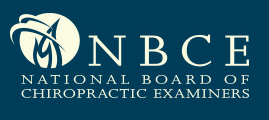Comparison of First-year Grade Point Average and National Board Acores Between Alternative Admission Track Students in a Chiropractic Program who Took or Did Not Take Preadmission Science Courses
SOURCE: Journal of Chiropractic Education 2020 (Mar)
Carissa J. Manrique, PhD and Gene Giggleman, DVM
Department of General Education
Parker University
2540 Walnut Hill Lane,
Dallas, Texas 75229
Objective: We compared first-year cumulative grade point average and a composite score on part I of the National Board of Chiropractic Examiners (NBCE) exam for first-year alternative admission track program (AATP) students who did and did not take three specific undergraduate courses: general chemistry, organic chemistry, and anatomy and physiology.
Methods: All AATP students in 2015 (n = 50) were evaluated for the course history of general chemistry and anatomy and physiology compared to their first-year cumulative grade point average and NBCE part 1 scores using independent t-tests.
Results: Students in the AATP who took general chemistry tended to score higher overall on the NBCE exams (p = .038, r = .229). Organic chemistry and anatomy and physiology had no statistical effect on improving board scores. First-year cumulative grade point average seemed to be unaffected by any of the undergraduate courses evaluated.
Conclusion: There was a statistically significant difference in
There are more articles like this @ our:
composite NBCE part 1 score between AATP students who had and had not taken general chemistry 1 before admission. There were no differences in first-year GPA between AATP students who had and had not taken undergraduate chemistry and A&P courses.
Keywords: Chiropractic, Education, Chemistry, Undergraduate
From the FULL TEXT Article:
INTRODUCTION
Doctor of chiropractic programs (DCP) require high academic performance and motivation to succeed. Students accepted into chiropractic programs generally are required to have at least six college hours of biology, six hours of inorganic chemistry, six hours of organic chemistry, and six hours of physics of basic science prerequisites. The Council on Chiropractic Education has determined that chiropractic colleges could determine their own additional admissions standards if approved, but it is the responsibility of the DCP to track and report those students’ progress and success due to changes. Recently, our DCP developed an alternative admissions track program (AATP) that accelerates undergraduate students into the program. These students are required to take only one prior undergraduate course in general biology (anatomy and physiology) and general chemistry.
Many other educational programs have attempted to explore the relationship between academic success in given prerequisite courses and program outcomes. A pharmacy program using retrospective data from 309 students found that American College Testing scores, organic chemistry, math, and prepharmacy course grades, and bachelor degree attainment were the best factors for academic success measured by first-year grade point average (GPA). In medical and dental schools, a high incoming GPA has shown to be a strong predictor for academic success. A more recent study found that Medical College Admissions Test scores were the best predictors for graduation from medical school.
Because American College Testing and Medical College Admissions Tests are not requirements for admissions into the DCP, these factors have not been evaluated. However, other preadmissions predictor requirements have been evaluated in the chiropractic profession. One study assessed the Learning and Study Strategies Inventory, and found that motivation and attitude towards learning significantly affected GPA in a course more so than cognitive activity. [10] Another study found that students with an incoming undergraduate GPA of 3.5 or higher performed significantly better in biochemistry than those with a lower incoming GPA. [11] Surprisingly, other factors, such as the number of science prerequisites, undergraduate degree type, and hours spent studying, had no significant effect on biochemistry grades in this study. [11]
One study focused on factors that influence success on Canadian Chiropractic Examining Board Licensure assessments. It concluded that second-year GPA was the most significant factor and explained 40% of the variance, while admissions interviews had no statistically significant effect. [12] Another study found that entering GPA and science GPA had a statistically significant positive correlation with students’ success in their first year at a chiropractic program and their board scores. [13] Green et al., [9] at Palmer College of Chiropractic West, revealed that students who began the DCP with a bachelor’s degree had a higher first-year GPA. They found that matriculating GPA, physics GPA, and chemistry GPA yielded the strongest regression model and could predict 27% to 33% of the variance of the success in the first year of the DCP, as measured by year 1 GPA. Many of these studies looked at the correlation between prior knowledge success (GPA overall or in an individual course) and success in the first year of a DCP.
The various factors that may predict student success in a DCP may be valuable, especially if this information could be used to identify potentially successful students or if students in the AATP might require remediation assistance. Since there was a change to admission requirements, we had the opportunity to investigate if variables related to preadmission requirements were predictive of first-year students’ academic success (measured by first-year GPA) and results on part 1 of their National Board of Chiropractic Examiners (NBCE) examinations.
There were two research questions for this study.
Will AATP students who take undergraduate chemistry, anatomy, and physiology (A&P) be more successful in the DCP than those who do not, as measured by first-year GPA?
Will AATP students who take undergraduate chemistry and A&P be more successful on NBCE part 1 than those who do not, as measured by a NBCE part 1 composite score?
Read the rest of this Full Text article now!






Leave A Comment